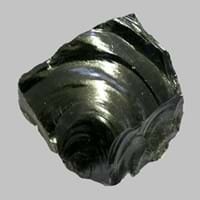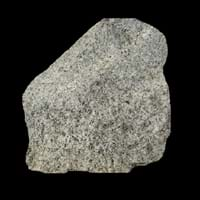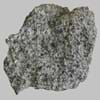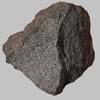Definition
Obsidian is a naturally occurring volcanic glass formed as an extrusive igneous rock. It is produced when felsic lava extruded from a volcano cools rapidly with minimum crystal growth
Granodiorite is a coarse-grained intrusive igneous rock containing quartz and plagioclase, and which has composition in between granite and diorite
Discoverer
Obsius
Unknown
Etymology
From Latin obsidianus, misprint of Obsianus (lapis) (stone) of Obsius
From granite + diorite
Class
Igneous Rocks
Igneous Rocks
Sub-Class
Durable Rock, Medium Hardness Rock
Durable Rock, Medium Hardness Rock
Other Categories
Opaque Rock
Coarse Grained Rock, Medium Grained Rock, Opaque Rock
Texture
Glassy
Granular, Phaneritic
Color
Black, Blue, Brown, Green, Orange, Red, Tan, Yellow
Black, Grey, Orange, Pink, White
Durability
Durable
Durable
Scratch Resistant
Yes
Yes
Appearance
Shiny
Veined or Pebbled
Interior Uses
Decorative Aggregates, Interior Decoration
Bathrooms, Countertops, Decorative Aggregates, Entryways, Floor Tiles, Flooring, Homes, Hotels, Interior Decoration, Stair Treads
Exterior Uses
Garden Decoration
As Building Stone, Bridges, Paving Stone, Garden Decoration, Office Buildings, Resorts
Other Architectural Uses
Not Yet Used
Not Yet Used
Construction Industry
Arrowheads, Cutting Tool, Knives, Scrapers, Spear Points
As Dimension Stone
Medical Industry
Surgery
Not Yet Used
Antiquity Uses
Artifacts, Jewellery
Artifacts, Monuments, Sculpture
Commercial Uses
Creating Artwork, Mirror, Used in aquariums
Curling, Gemstone, Laboratory bench tops, Tombstones
Types
Fireworks Obsidian, Mahogany, Sheen Obsidian, Snowflake obsidian and Velvet Peacock Obsidian
Not Available
Features
Blocks negativity, Helps to protect against depression
Available in Lots of Colors and Patterns
Archaeological Significance
Monuments
Not Yet Used
Used
Famous Monuments
Not Applicable
Data Not Available
Sculpture
Not Yet Used
Used
Famous Sculptures
Not Applicable
Data Not Available
Figurines
Not Yet Used
Used
Formation
When the lava is released from volcano, it undergoes a very rapid cooling which freezes the mechanisms of crystallization. The result is a volcanic glass with a uniform smooth texture.
Granodiorite is an intrusive igneous rock which is very hard, crystalline and is visibly homogeneous in texture and forms by melting of continental rocks.
Mineral Content
Not Available
Amphibole, Biotite, Feldspar, Hornblade, Micas, Muscovite or Illite, Plagioclase, Pyroxene, Quartz
Compound Content
Aluminium Oxide, CaO, Iron(III) Oxide, FeO, Potassium Oxide, MgO, MnO, Sodium Oxide, Phosphorus Pentoxide, Silicon Dioxide, Titanium Dioxide
Aluminium Oxide, CaO, Iron(III) Oxide, FeO, Potassium Oxide, MgO, MnO, Sodium Oxide, Phosphorus Pentoxide, Silicon Dioxide, Titanium Dioxide
Types of Metamorphism
Burial Metamorphism, Cataclastic Metamorphism, Contact Metamorphism
Burial Metamorphism, Cataclastic Metamorphism, Contact Metamorphism, Hydrothermal Metamorphism, Impact Metamorphism, Regional Metamorphism
Types of Weathering
Biological Weathering, Chemical Weathering, Mechanical Weathering
Chemical Weathering
Types of Erosion
Chemical Erosion, Coastal Erosion, Glacier Erosion
Chemical Erosion, Glacier Erosion, Wind Erosion
Grain Size
Not Applicable
Medium to Coarse Grained
Fracture
Conchoidal
Not Available
Porosity
Very Less Porous
Less Porous
Luster
Vitreous
Grainy, Pearly and Vitreous
Cleavage
Non-Existent
Not Available
Toughness
Not Available
Not Available
Specific Gravity
2.6-2.7
2.6-2.7
Transparency
Translucent
Opaque
Density
2.6 g/cm3
2.6-2.8 g/cm3
Resistance
Heat Resistant, Impact Resistant
Heat Resistant, Wear Resistant
Deposits in Eastern Continents
Asia
Afghanistan, Indonesia, Japan, Russia
China, India, Iran, Saudi Arabia, Sri Lanka, Taiwan, Thailand, Turkey, Vietnam
Africa
Kenya
Angola, Egypt, Madagascar, Namibia, Nigeria, South Africa
Europe
Greece, Hungary, Iceland, Italy, Turkey
Austria, Belgium, Finland, France, Germany, Italy, Norway, Sardinia, Spain, Switzerland, The Czech Republic, Venezuela
Others
Not Yet Found
Not Yet Found
Deposits in Western Continents
North America
Canada, Mexico, USA
Canada, USA
South America
Argentina, Chile, Ecuador, Peru
Not Yet Found
Deposits in Oceania Continent
Australia
New Zealand
Not Yet Found
All about Obsidian and Granodiorite Properties
Know all about Obsidian and Granodiorite properties here. All properties of rocks are important as they define the type of rock and its application. Obsidian and Granodiorite belong to Igneous Rocks.Texture of Obsidian is Glassy whereas that of Granodiorite is Granular, Phaneritic. Obsidian appears Shiny and Granodiorite appears Veined or Pebbled. The luster of Obsidian is vitreous while that of Granodiorite is grainy, pearly and vitreous. Obsidian is available in black, blue, brown, green, orange, red, tan, yellow colors whereas Granodiorite is available in black, grey, orange, pink, white colors. The commercial uses of Obsidian are creating artwork, mirror, used in aquariums and that of Granodiorite are curling, gemstone, laboratory bench tops, tombstones.










